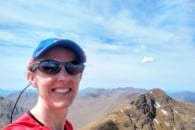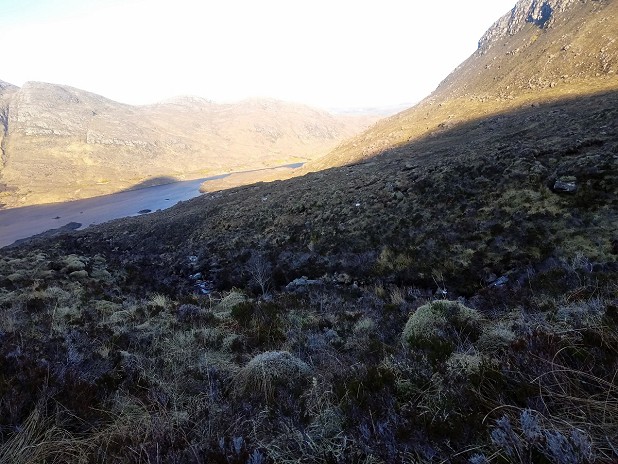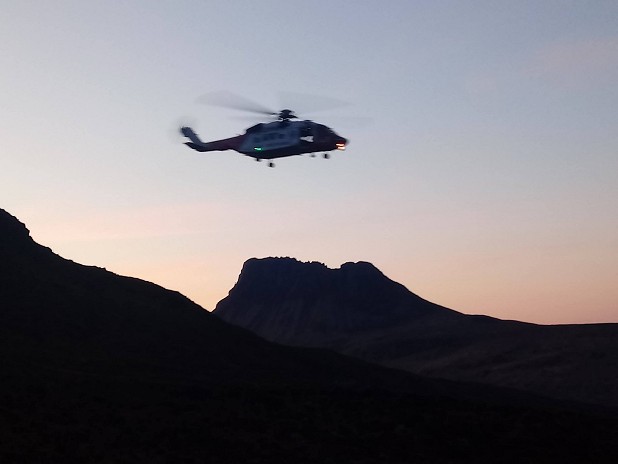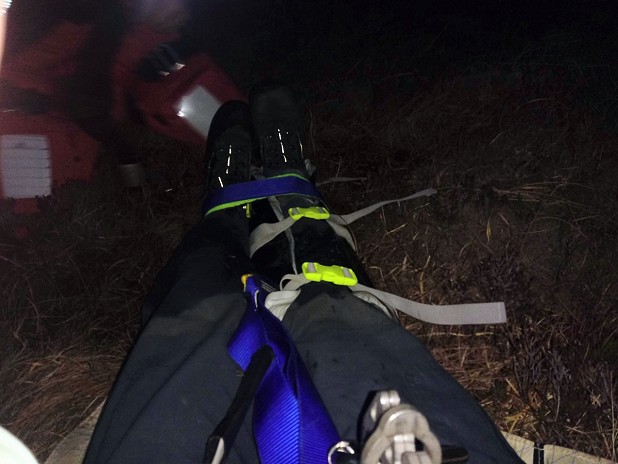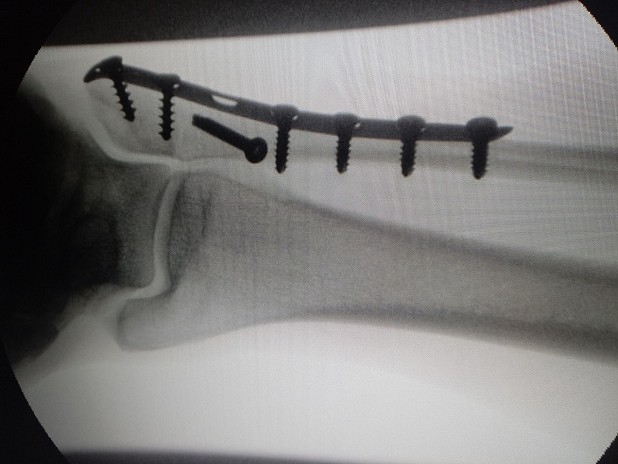First Aid Kit
Just-in-case gear is only surplus until you need it. On a warm spring day in Assynt, Gail Donaldson could have gone ultra-light and barely equipped. But when a surprise slip left her incapacitated, alone, and out of mobile signal, she was glad to have packed with accidents in mind. Her first aid kit proved invaluable.
Though it's often overlooked, first aid stuff should arguably be considered a must-have, whether you're walking, scrambling, or climbing on a mountain crag. Here keen hillwalker and paramedic Gail offers advice on a basic kit that's compact enough for weight-conscious packing, and easily used even if your skills are limited.
I've done all the better known hills in Coigach and Assynt, so had decided to Beinn an Eoin, a lovely looking Graham in its own right. A nice circular route of around 12km from where I parked would take in its subsidiary peaks, and didn't require an early start given the great weather and plentiful hours of daylight.
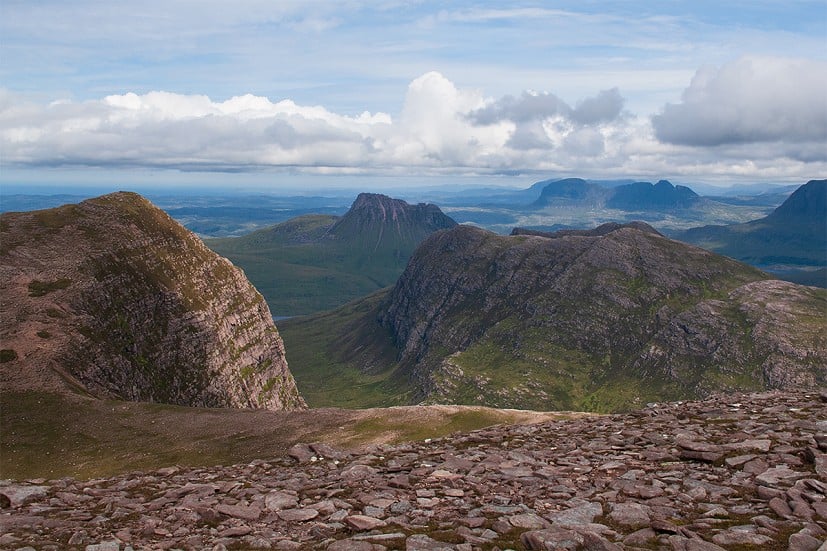
I was setting off in a sunhat and t-shirt, and it felt like sunscreen and water were all the extra supplies I'd need for what I'd consider a relatively short walk and a straightforward ridge route I could clearly see. But as usual, I still erred on the side of caution with the contents of my bag, taking extra layers, two fully charged phones on different networks, map and compass, and a simple first aid kit.
The route proved as enjoyable and straightforward in those conditions as I'd hoped, and after I'd taken in the stunning views from the top of Sgorr Tuath, I re-trod my steps a short distance to find the best looking gradient and terrain to descend and head directly back to the road. All was fine as I started heading down on short vegetation, but then I slipped; nothing spectacular, I just put my foot down on a small patch of mud which caused me to slip and fall over.
Sitting there wasn't going to get me nearer assistance, so I got out my first aid kit to see what might help...
I felt immediate pain, and sat for minute holding my lower leg, thinking it might pass. It didn't. I tried to stand up, leaning on a walking pole, and the pain was unbearable. I sat down and had a think about what to do. Feeling down my leg and ankle, I could tell it wasn't an open fracture, but it did feel likely to be a closed fracture. I certainly wasn't going to take my hiking boot off and investigate further, since the boot was at least giving the ankle some support. It didn't really matter whether it was a sprain or a fracture - the key issue for now was that I wasn't able to walk on it.
I couldn't see my car, but I could see the road around 3 km away. I'd had in my head it would take me about an hour to walk back, so maybe crawling I could do it in the 3 hours of light left?
I sent a text to a colleague who lived in Ullapool, asking if she was there and would she be able to meet me at the road as I'd hurt my ankle. No signal on either phone though. Sitting there wasn't going to get me nearer assistance, so I got out my first aid kit to see what might help. The gradient and short vegetation suggested going down backwards on my bum, dragging my leg straight behind me, might be the least-worst option, so I used the tape I had in my first aid kit to splint my leg to the walking pole to give it some stability. Next, I took a couple of painkillers - diclofenac as I had some left from not finishing a previous prescription, and giving me the option of still taking paracetamol a bit later as I'd probably want to top up pain relief. Long sleeves and gloves went on to give some protection from ticks and rough ground, and I started heading down.
After what felt a long half hour, I'd managed only about 50m. I realised my chances of getting to the road even on this relatively straightforward ground were practically nil, never mind the burns and bogs I'd have to cross as well.
There'd been no signal on either phone still, but both were registered with the 999 service, so I sent short texts with my location, name and injury, asking for MRT via the police, and set off again so that MRT would at least have a shorter distance to get to me. Once the gradient lessened, dragging myself backwards became harder. I was approaching a burn which, on foot, I could have crossed without too much difficulty, but in my current predicament, might as well have been the Grand Canyon. I still had plenty of water left, otherwise I'd have tried to refill bottles there, but instead I changed tack and decided to try and head down towards the loch, hoping that would be a faster way to potentially bring me out of the curve of Beinn an Eoin's hills blocking all signal, which by now I was checking every few minutes.
I've been a paramedic for a few years, but the simple first aid kit I usually carry for a hill walk is the same as anyone else could easily use
By now I'd switched to crawling, and the ground had become boggier. Another layer on as I was now completely in shade and the temperature had dropped markedly. With much relief, I finally showed as having signal for emergency calls, though when I got through, the call taker couldn't hear me very well and the call ended with me wondering if she'd hung up thinking I was a prank caller. That was a low point for me and it hit me just how exhausted I was.
I hadn't taken much to eat on the walk itself and had finished what I had, except for two energy gel sachets in my first aid kit (I don't consider them food and so they are purely for emergencies). Having them gave me a boost, mentally as much as physically.
More crawling, then I saw texts saying I had missed calls and voicemail messages both from my colleague in Ullapool and from an unknown number; I just hadn't had the signal to get calls. More crawling, and then my phone rang. It was the police, following up the unclear 999 call and 999 text messages. The officer was in Edinburgh and not familiar with the area I was in but was trying his best to work out what to do and what MRT to send, asking me if Torridon or Dundonnell was nearer. He asked if I was still at the same location I'd given in my text (no) or if I could give him a What3Words (I didn't want to risk playing with phones when I finally had a clear phone call), so I used my OS map to give him my grid reference. I was injured, but at least I knew where I was. I told him it was an isolated lower limb injury, not currently limb or life threatening in itself.
A short time later, Dundonnell MRT called to say help would be coming. They updated me to say by the time they'd assembled, got to the area and walked to find me, it would be well into darkness and carrying me out in the dark over rough terrain wouldn't be a good option (which was definitely true - I hadn't even managed the terrain in daylight and not carrying a casualty!) - so they'd requested the Search and Rescue helicopter. I should make myself visible, the said. The foil blanket in my first aid kit, carried for years and weighing practically nothing, was great for this. In addition to waving my headtorch (I also had a mirror as a back-up to reflect a searchlight in case all batteries packed in), I waved the foil blanket as the helicopter came into view in the distance and the crew told me later they'd spotted me from a mile or two away.
I've been near the SAR helicopters before (just never as a patient) so was prepared for the tremendous downdraft, and had stuffed the flapping foil blanket down my jacket rather than have it blow away or be shredded in the rotors. They were unable to land, but the winchman came down and put my ankle in a vac splint, strapped my legs together and we got winched back up. The relief I felt once in their care was amazing.
The outcome was that my ankle was well and truly broken and required subsequent surgery at Raigmore Hospital in Inverness to get everything back in place. It's now held together by a plate and seven screws. I'm facing a long and difficult recovery, but the outcome could have been a lot worse.
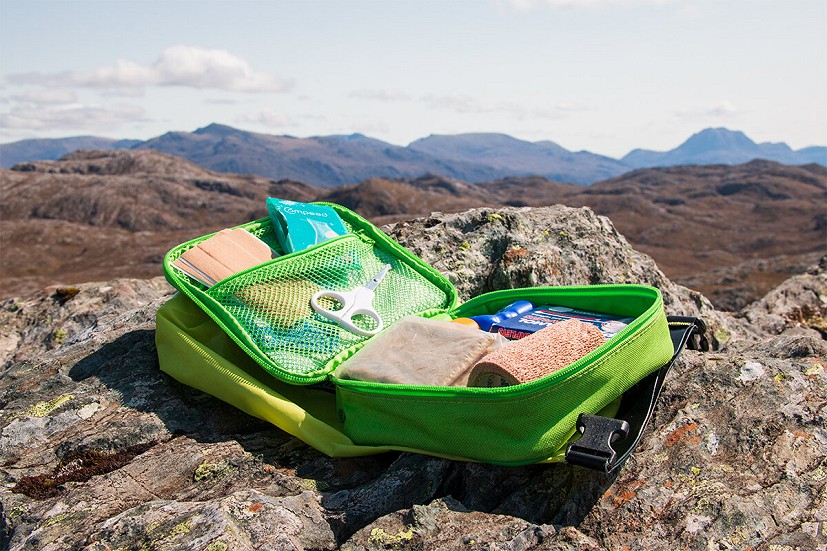
First Aid Kit notes:
I've been a paramedic for a few years, but nothing I used was out of the ordinary. The simple first aid kit I usually carry for a hill walk is the same as anyone else could easily carry and use. There are plenty of pre-prepared first aid kits you can buy, though I take my own and have things in it that can be used for different purposes:
- Bandages* (personal choice, see below)
- Tape (Adhesive micropore tape and duct tape)
- Gauze
- Painkillers (paracetamol, ibuprofen, aspirin - the latter also for chest pain)
- Antihistamine tablets
- Tick removal tool
- Foil blanket
- Energy gels or sweets (or something else that isn't so tempting you'll just snack on it on your walk and not have it left there for an emergency)
- Sterile cleansing wipes - optional: washing a wound with clean water is usually just as good in first aid
- Steristrips or wound glue may be of use, but you'd want to be sure you'd done a good job of irrigating the wound first
- Blister pad
- Scissors or penknife
- Latex or nitrile gloves - personal choice but might be useful if treating someone else when body fluids are present
- Oral rehydration salts
- Insect repellant
- Sunscreen
* Bandages and dressings aren't prescriptive. I take a couple of individually wrapped bandages which incorporate a dressing pad, in addition to a couple of adhesive dressings, or medical gauze I would use with tape or a compression bandage. Some people may want to spend more and get more specialist items such as specialist trauma bandaging (e.g. "Israeli" bandages), haemostatic gauze or a SAM splint, but personally I think that's getting beyond just a simple first aid kit.
